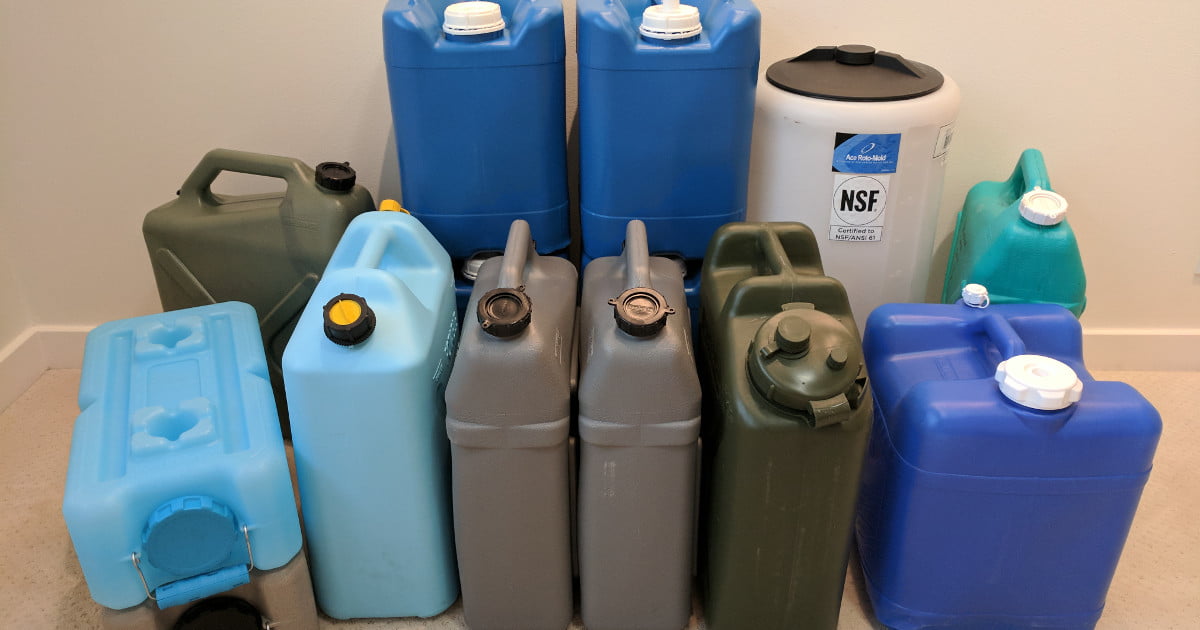OK, coming back to this regarding water filters.
DO NOT think a Life Straw is OK for SHTF type survival. That's a one person get you out of the woods for a day solution, and only if the water is not too nasty. Expecting that to work for longer periods of time, for multiple people, or with nasty source water will get you in serious trouble. Nice little item for a quick fix, but not something you want for sustained water supply.
The typical backpacker filters from MSR, Katahdin, etc. are a step better but in my experience observing several fail on longer treks, they are good for a few days to a week for one or two people. Additionally you will want a back up filter based on what I have seen happen in the field. Don't fall for the overall rating and actually read the reviews on REI for MSR's best model. Still wanna bet your life on it? MSR makes fantastic backpacking stoves, but their water filtration offering needs attention.
The only units I would bet my life on for a bug out situation are the portable ones from General Ecology. First Need® Trav-L-Pure® w/Tote Bag . I backpack with the most portable one, the First Need XL. It's less than half the price of MSR's best, by the way. While 'guiding' (I let them lead themselves as much as is safe) a small scout group through the AT 100 mile Wilderness eventually all the other filters failed and the XL ended up filtering for 8 people by the end of the trek. I think I had to backwash it once that time- the local water was not terrible. Similar story out west on a 130 mile trek, but in that case the drought conditions left us with some pretty nasty water sources. Every single Katahdin, MSR, etc. eventually failed and left us with only the General Ecology unit. I had to backwash multiple times due to the very poor water quality, but that kept it going.
Boiling works too. It may not look OK and may smell and taste bad, but it won't kill you. If you are going to filter, don't mess around. Crypto was extremely uncommon in our formerly first world country, but in recent years there have been more and more outbreaks. I got a crypto infection from a numbnuts I should not have trusted to provide safe water in the field, and it's no party.
DO NOT think a Life Straw is OK for SHTF type survival. That's a one person get you out of the woods for a day solution, and only if the water is not too nasty. Expecting that to work for longer periods of time, for multiple people, or with nasty source water will get you in serious trouble. Nice little item for a quick fix, but not something you want for sustained water supply.
The typical backpacker filters from MSR, Katahdin, etc. are a step better but in my experience observing several fail on longer treks, they are good for a few days to a week for one or two people. Additionally you will want a back up filter based on what I have seen happen in the field. Don't fall for the overall rating and actually read the reviews on REI for MSR's best model. Still wanna bet your life on it? MSR makes fantastic backpacking stoves, but their water filtration offering needs attention.
The only units I would bet my life on for a bug out situation are the portable ones from General Ecology. First Need® Trav-L-Pure® w/Tote Bag . I backpack with the most portable one, the First Need XL. It's less than half the price of MSR's best, by the way. While 'guiding' (I let them lead themselves as much as is safe) a small scout group through the AT 100 mile Wilderness eventually all the other filters failed and the XL ended up filtering for 8 people by the end of the trek. I think I had to backwash it once that time- the local water was not terrible. Similar story out west on a 130 mile trek, but in that case the drought conditions left us with some pretty nasty water sources. Every single Katahdin, MSR, etc. eventually failed and left us with only the General Ecology unit. I had to backwash multiple times due to the very poor water quality, but that kept it going.
Boiling works too. It may not look OK and may smell and taste bad, but it won't kill you. If you are going to filter, don't mess around. Crypto was extremely uncommon in our formerly first world country, but in recent years there have been more and more outbreaks. I got a crypto infection from a numbnuts I should not have trusted to provide safe water in the field, and it's no party.

![Laugh [laugh] [laugh]](/xen/styles/default/xenforo/smilies.vb/012.gif)
![Wink [wink] [wink]](/xen/styles/default/xenforo/smilies.vb/002.gif)




